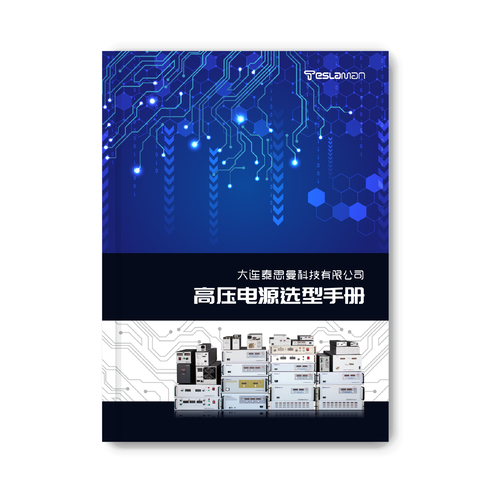Waveform Regulation of High-Voltage Power Supplies for Semiconductor Testing
Abstract: This article explores in depth the waveform regulation of high-voltage power supplies for semiconductor testing from a professional perspective. It elaborates on the importance of waveform regulation in semiconductor testing, analyzes in detail common waveform regulation techniques and methods, including voltage amplitude regulation, rise and fall time control, and pulse width modulation, etc., and discusses the challenges faced by waveform regulation and its future development trends, aiming to provide a theoretical basis and technical reference for the optimization and innovation of high-voltage power supplies for semiconductor testing.
I. Introduction
Against the backdrop of the rapid development of the semiconductor industry, the performance testing of semiconductor devices is of crucial importance. As a key component in semiconductor testing equipment, the quality of the output waveform of high-voltage power supplies directly affects the accuracy and reliability of test results. Precise waveform regulation can simulate various voltage conditions under which semiconductor devices operate in actual work, thereby effectively detecting performance parameters, withstand voltage capabilities, switching characteristics and other indicators of the devices. Therefore, in-depth research on the waveform regulation of high-voltage power supplies for semiconductor testing is of great significance.
II. Importance of Waveform Regulation
(I) Accurate Detection of Device Characteristics
Different semiconductor devices have specific requirements for voltage waveforms. For example, power semiconductor devices need to withstand rapid voltage changes during the switching process. By precisely regulating the waveform of high-voltage power supplies, the actual working conditions can be simulated, and key characteristics such as switching losses and on-resistance of the devices can be accurately measured, providing reliable data for the optimal design and quality assessment of the devices.
(II) Improvement of Testing Efficiency and Reliability
Appropriate waveform regulation can reduce misjudgments and errors in the testing process. Stable and repeatable waveforms can ensure consistent results in multiple tests and avoid the dispersion of test data caused by fluctuations in the power supply waveform. Meanwhile, quickly switching waveform parameters according to different types and specifications of semiconductor devices can improve testing efficiency and reduce testing costs.
III. Common Waveform Regulation Techniques and Methods
(I) Voltage Amplitude Regulation
The voltage amplitude is precisely set by adjusting the voltage amplification circuit inside the high-voltage power supply or by using digital control techniques. This can utilize a feedback control loop to monitor the output voltage in real time, compare it with the set value, and adjust the output power of the power supply to achieve a stable voltage amplitude output. For example, by using a high-precision digital-to-analog converter (DAC) combined with a voltage feedback amplifier, fine adjustment of the voltage amplitude within a wide range can be achieved to meet the diverse needs of different semiconductor tests for voltage amplitude.
(II) Rise and Fall Time Control
Semiconductor devices are sensitive to the rise and fall times of voltage during the rapid switching process. In order to simulate such working conditions, high-voltage power supplies need to have the precise control ability for the rise and fall times of waveforms. A combination of high-speed switching devices and buffer circuits can be used to control the voltage switching rate. By adjusting the parameters of the buffer circuits, such as the values of capacitors and resistors, the slopes of the voltage rise and fall times can be changed to meet the requirements of semiconductor testing. In addition, programmable devices such as digital signal processors (DSP) or field programmable gate arrays (FPGA) can be used to achieve flexible programming control of the rise and fall times to adapt to changes in different test scenarios.
(III) Pulse Width Modulation
Pulse width modulation (PWM) technology is also widely used in the waveform regulation of high-voltage power supplies for semiconductor testing. By adjusting the width of pulses, the average value of the output voltage can be controlled to achieve equivalent regulation of the voltage waveform. In PWM control, precisely controlling the on and off times of pulses can generate pulse sequences with different duty cycles, and then obtain the required average voltage. This method is particularly effective when it is necessary to simulate pulse voltage waveforms with different duty cycles, such as when testing the pulse response characteristics of semiconductor devices or their working performance under specific duty cycle conditions.
IV. Challenges Faced by Waveform Regulation
(I) Requirements for High-Frequency Characteristics
With the continuous increase in the working frequency of semiconductor devices, higher requirements are put forward for the high-frequency characteristics of high-voltage power supply waveforms. In high-frequency situations, parasitic inductance, capacitance and other components of the power supply will have a greater impact on the waveform, leading to problems such as waveform distortion and oscillation. How to achieve precise waveform regulation in a high-frequency environment and reduce the influence of parasitic parameters is an important challenge at present.
(II) Adaptability to Load Changes
During the semiconductor testing process, the load characteristics may change significantly. For example, different types of semiconductor devices have different input impedances, and changes in the working state of the devices during the testing process will also cause dynamic changes in the load. High-voltage power supplies need to have good load adaptability and be able to maintain stable waveform output when the load changes, avoiding waveform out-of-control or power supply failures caused by load fluctuations.
(III) Requirements for High Precision and Stability
Semiconductor testing has extremely high requirements for the precision and stability of voltage waveforms. Tiny voltage fluctuations or waveform distortions may lead to deviations in test results and affect the accurate assessment of the performance of semiconductor devices. Therefore, in the process of waveform regulation, it is necessary to overcome various interference factors, such as power supply noise and temperature changes, to achieve high-precision and high-stability waveform output.
V. Future Development Trends
(I) Digital and Intelligent Control
With the continuous development of digital technology, the waveform regulation of high-voltage power supplies for semiconductor testing will develop towards digitalization and intelligence. By adopting more advanced digital controllers combined with artificial intelligence algorithms, adaptive regulation of waveforms can be achieved. For example, by using machine learning algorithms to analyze the test data of different semiconductor devices, waveform parameters can be automatically optimized to improve the accuracy and efficiency of testing.
(II) Integrated and Modular Design
In order to improve the performance and reliability of high-voltage power supplies, integrated and modular design concepts will be adopted more in the future. The waveform regulation circuit will be integrated with the high-voltage generation circuit, etc., reducing external connection lines and the influence of parasitic parameters. Meanwhile, modular design can facilitate combination and expansion according to different testing requirements, improving the versatility and flexibility of high-voltage power supplies.
(III) Collaborative Development with Semiconductor Manufacturing Processes
The continuous progress of semiconductor manufacturing processes will promote the innovation of waveform regulation technologies for high-voltage power supplies. For example, the emergence of new semiconductor materials and device structures may require high-voltage power supplies with higher precision and more special waveforms for testing. The waveform regulation technologies of high-voltage power supplies need to be closely combined with semiconductor manufacturing processes and develop together to meet the growing testing needs of the semiconductor industry.
In conclusion, the waveform regulation of high-voltage power supplies for semiconductor testing is irreplaceably important for the development of the semiconductor industry. By continuously researching and innovating waveform regulation techniques and methods, overcoming the current challenges, and grasping the future development trends, it will help to improve the level of semiconductor testing and promote the further development of semiconductor technology.




















